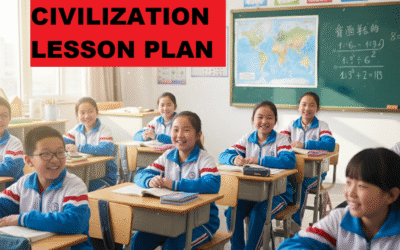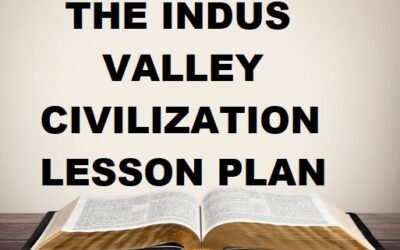History Lesson Plan Of Chapter 4: What Books And Burials Tell Us
Class VI History Chapter 4 Lesson plan is an activity that a teacher has to perform before the actual teaching takes place. It is the road map for any teacher. Moreover, effective lesson planning provides the students with the necessary structure and direction. It also takes care of the diverse needs of our students. Class VI History Chapter 4 Lesson plan provides better resources that are integral to students. This Class VI History Chapter 4 lesson plan is full of classroom activities that children will enjoy doing. It will also allow teachers to critically reflect on and improve our teaching and learning practice. It ensures every minute of class time in teaching new concepts. Class VI History Chapter 4 lesson plan will help you to reach every child with a clear plan in mind.
History Lesson Plan Of Chapter 4: What Books And Burials Tell Us
General Objective:
Firstly, to develop students’ interest in the subject.
Secondly, to understand society and its place within it.
Thirdly, developing scientific temperament among the students.
Fourthly, to develop skills of inquiry, investigation, and analysis.
Finally, to enhance students’ learning ability.
Specific Objective:
- Students will know about the Vedas.
- They will also learn about the settlement.
- Finally, Students will also learn through case studies about the North-West and the Deccan.
- The students will be able to analyze the importance of Books and Burials in History.
Content/ Teaching Points:
- One of the oldest books in the world.
- How Historians study the Rigveda.
- Cattles, Horses and Chariots.
- Words to Describe People
- The story of the Megaliths.
- Finding out about social differences.
- a special burial at Imangaon
Checking Previous Knowledge:
At first, the teacher checks the previous knowledge of the students by asking a few questions.
Introducing Topic:
At first, the teacher introduces the topic by asking basic questions like:
Teacher: Do you have pet animals at home?
Student’s response: Yes / No Teacher (varied responses)
Teacher: Which animal do you think was first tamed by ancient people?
Student’s answer: Goat, Dog, Cow, Horse (varied responses)
Teacher: Have you heard about the ancient book called Vedas?
Student’s answer: yes.
Teacher: Can you tell me how many Vedas are there?
Student’s answer: Four.
Teacher: Do you know from where we get such information?
Student’s answer: Books.
Teacher: Yes we get this information from Books and Burials. Do you what are Burials?
Students: No response.
Statement of Topic
O.K. So, today we are going to read about “what books and Burials tell us”.
Teaching aids:
Text Book, Black Board, You tube videos, Images, and PPT
Technique:
To begin with, the teacher starts the Interactive session with common examples.
However, the teacher uses various methods to make the topic interesting by interacting with the children in the class.
By asking very simple questions, the teacher draws the attention of the class.
Also make sure that the children are involved in the discussion.
Finally, While interacting with the students, the teacher also tells about
History Lesson Plan Of Chapter 4: What Books And Burials Tell Us
Introducing Topic: storytelling method
Day 1 – what books and Burials tell us
Around 3500 years ago, Vedas were written.
There are four Vedas namely Rigveda, Yajurveda, Samaveda, and Atharva Veda.
Out of which, Rigveda is the oldest.
It is written in Sanskrit and has more than 1000 hymns (sukta)
Most of these hymns were in the praise of Gods and Goddesses.
However, three Gods were very important.
They were Agni (the God of Fire), Indra – The god of warriors, and Soma – (a plant from which special drink was prepared)
These Hymns were composed by sages (Rishis)
Priests taught these Hymns to students.
Students had to read, recite and learn these suktas.
Moreover, Most of the Hymns were composed by man and a few by women as well.
Class VI Geography Chapter 3 Lesson Plan With Activities
First Activity: Open Book Activity:
Topic: Rigveda
Time: 20 minutes.
Procedure: The teacher prepares 10 short questions.
Asks the students to discuss and find the answers from the textbook.
Questions:
Q1. How many Vedas are there?
Q2. Name the oldest Vedas.
Q3. When was it composed?
Q4. Name the three important Gods mentioned in Vedas.
Q5. Vedas are composed in which language?
Q6. How many Hymns are there in Rigveda?
Day 2:
The teacher discusses about the Importance of Rigveda as a source of History
Day 2:
The teacher discusses cattle, Horses, and Chariots.
Day 3:
The teacher discusses the words to describe people.
Day 4:
The teacher discusses Megaliths
Day 5:
The teacher discusses the burials as a source of information.
Second Activity: Group Discussion
Description:
The teacher divides the class into four groups.
Each group is given a topic from the chapter, such as
- i) What can we learn from dead bodies?
- ii) Megaliths
iii) Different words are used to describe people.
- iv) How burials are an important source of information?
Group members have to read the topic from the book and provide information based on the given topic.
They will be given 20 minutes time to collect information and 3 minutes time to present.
Finally, their observations will be displayed on the class board for two days.
Class VI Civics Chapter 2 Lesson Plan
Learning Objective:
By the end of the activity, students will be able to:
- describe the importance of the dead body as a source of information.
- explain Megaliths.
- provide detailed information about Different words used to describe people.
- describe the importance of burials.
Assessment Criteria:
Indicators
- Relevance of Content
- Presentation of information gathered
- Awareness of the information gathered
- Creativeness
- Analytical Skills
Classwork:
- i) Firstly, Objective and short answer type questions will be done.
- ii) Finally, Long answer type questions will be discussed and done in the class.
Homework:
- Compare Vedic science with that of modern science.
- Find out the role and status of women during Rigveda.
Values imparted:
Firstly, Social responsibility.
Secondly, Sensitization towards disadvantages of war for gaining power.
Multidisciplinary Integrated learning:
- Art: Draw a scene of Harappan town showing streets and drainage system.
- English/ Hindi: T.V. reporting of a dead body as source of information.
- Sanskrit: write a hymn from Rigveda and explain the meaning in Hindi/ English.
Assessment Criteria:
Indicators
- Relevance of Content
- Presentation of information gathered
- Awareness of the information gathered
- Creativeness
- Analytical Skills
Learning Outcome:
After the completion of this chapter, students will be able to
- Firstly, explain the information which we acquire from Rigveda.
- Secondly, discuss the source of History.
- Thirdly, sketch out the information we get from ancient sources and
- Finally, find facts about Gods, Goddesses, Rivers, and wars.
Remedial Measure:
Pair and share
Children sitting on the left side of the row will explain the chapter to the children sitting on their right.
History Lesson Plan Of Chapter 4: What Books And Burials Tell Us
Conclusion:
I hope the Class VI History Chapter 4 Lesson plan will be of great help to the new teachers.
Did you enjoy conducting activities given in the Class VI History Chapter 4 Lesson plan
At last, I request you to comment and subscribe.
So that, you get the notification of the next lesson plan.
Class VI History Chapter 3 Lesson Plan – In the Earliest Cities
Class VI History Chapter 2 Lesson Plan – As Per NCF
Was this lesson plan helpful to you? Write your views in the comment box.





0 Comments